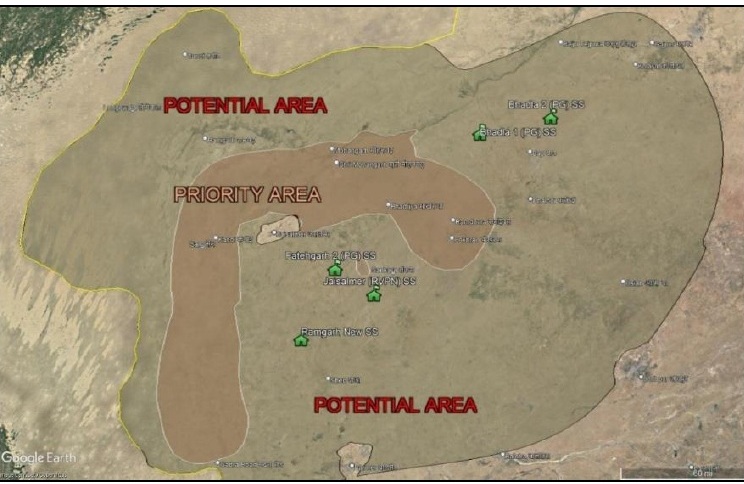The Union power ministry, on December 27, 2022, gave its approval to the report of the expert technical committee that was constituted to formulate techno-economic norms for installing transmission systems in potential habitats of the Great Indian Bustard (GIB).
The committee has specified techno-economic norms for laying of underground cables, as an obvious alternative to overhead transmission lines, especially in potential GIB habitats.
The committee has issued the following broad principles for undergrounding of power transmission lines:
- Undergrounding of transmission lines of 66kV and above voltage levels is not technically feasible for evacuation of Bulk power on account of the different constraint as mentioned in the report. The power evacuation lines be allowed to be constructed over ground as any outage in the underground line due to any fault or damage would require much longer time for restoration that compared to overhead line, and would amount to huge generation losses.
- ln respect of 33kV and below rated lines, which are used for transfer of lower volumes of power over shorter distances, the undergrounding of transmission lines is technically feasible and can be adopted, keeping in view local circumstances.
The following guidelines may be followed for installation of bird diverters
- ln respect of EHV transmission lines with two or more conductors per phase (bundle conductors), placement of bird diverters on the earth wire(s)/ OPGW may suffice.
- ln respect of transmission lines with single conductor in each phase, the bird diverters can be placed on the phase conductors as well as on the earth wire(s)/ OPGW.
- The bird diverters shall be placed on central 80 per cent span of the line and at an interval of 10m.
Background
It may be recalled that Power Grid Corporation of India Ltd (PGCIL) faced difficulties during the implementation of at least three ISTS projects in Rajasthan, owing to the presence of GIB habitats. These transmission projects involved 765kV lines. Laying of underground cables could have been a logical alternative to overhead lines in these areas but it was technically infeasible to do so, especially at 765kV voltage level. It was therefore suggested that bird diverters be installed on transmission towers of such affected overhead lines.
The Union power ministry, in May 2022, constituted a high-level experts committee with members from CEA, CTUIL and MoEF&CC headed by Member (Power System), CEA. This committee was responsible for preparation of a report on technical feasibility of transmission system including bird diverters that can be installed in GIB areas.
The committee submitted its report to the power ministry in around August 2022 and the same was approved by the ministry on December 27, 2022.
GIB extent in Rajasthan
The need for these techno-economic guidelines can be gauged from the following. The total GIB potential habitat area in Rajasthan is 78580 sqkm, which covers 23 per cent of the entire state’s area. Due to good irradiation and abundant land, western Rajasthan (where potential GIB area is mainly found) has very high potential for solar and wind generation. Currently, around 19 GW of renewable energy capacity has already been established in Rajasthan, much of it falling under GIB areas. Further, under the Rajasthan Solar Energy Zone (Phase-2 of 8.1 GW and Phase-3 of 20 GW), additional 28 GW of renewable energy generation has been envisaged. About 25 GW of this falls under potential GIB areas.
Featured photograph (extracted from the expert committee report discussed in this story) shows the potential and priority GIB habitats in Rajasthan.

